Introduction to Aquamarine stone
Aquamarine stone, a gemstone known for its strikingly beautiful blue or blue-green color, has captured the hearts of many with its serene appeal. Revered for its enchanting hues reminiscent of the sea, aquamarine derives its name from the Latin words “aqua,” meaning water, and “marina,” meaning of the sea. This gemstone belongs to the beryl family, which also includes other notable stones such as emerald and morganite. The captivating transparency and luster of aquamarine make it highly sought after in the world of gemstones.
This stone is traditionally associated with the month of March and serves as the aquamarine birthstone, endowing those born in this month with its tranquil qualities. The allure of aquamarine is not merely confined to its appearance; it is also celebrated for its gemological properties. Typically found in various shades of blue ranging from pale to vivid, the color of aquamarine is attributed to the presence of iron within its crystal structure. The most prized aquamarine stones exhibit a deep blue hue with immaculate clarity.
In many cultures, aquamarine has been imbued with symbolic meanings, often associated with peace, mental clarity, and the calming essence of the ocean. Its uses extend beyond just ornamental purposes; historically, it has been believed to offer protection for sailors, ensuring a safe voyage across turbulent waters. Whether showcased as a centerpiece in fine jewelry or cherished for its mystical properties, the aquamarine stone continues to hold a special place in the realm of gemstones.
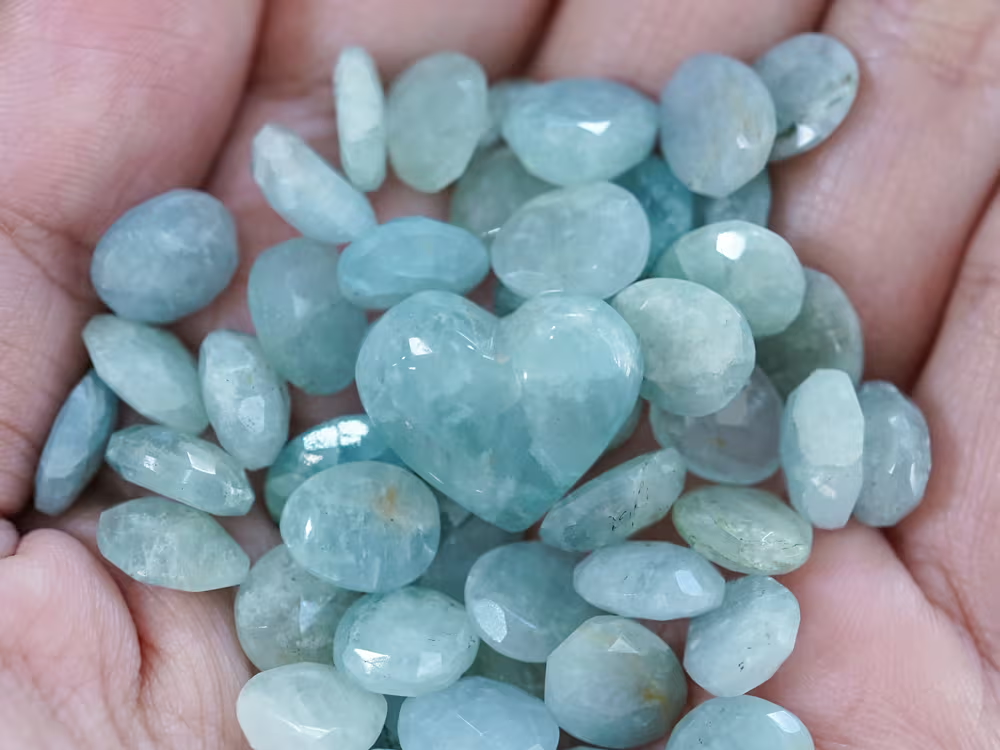
Historical Significance of Aquamarine
Aquamarine stone, with its ethereal blue hue reminiscent of the ocean, has been treasured for centuries, tracing back to ancient civilizations. The name itself originates from the Latin term “aqua marina,” which translates to “water of the sea,” a direct reflection of its captivating blue color. Aquamarine stone in urdu is called aab-e-Bahr. This gemstone held significant value in various cultures, often symbolizing purity, clarity, and eternal youth.
In ancient Roman times, aquamarine was believed to be the sailor’s stone, providing protection and ensuring safe passage across treacherous waters. Sailors would often carry aquamarine amulets as a safeguard against the capricious sea god, Neptune. Furthermore, aquamarine was thought to imbue the wearer with foresight and courage, making it a popular choice among warriors and leaders in history.
Beyond its revered status among sailors, aquamarine’s allure extended to the courts of medieval royalty. It was considered a token of love and fidelity, often adorned in engagement rings and intricate jewelry pieces. Legends narrate that the aquamarine stone could rekindle marital happiness and ensure a prosperous union. Noteworthy historical figures, including Catherine the Great of Russia, were known to adorn themselves with aquamarine jewels, further cementing its reputation as a stone of affluence and grace.
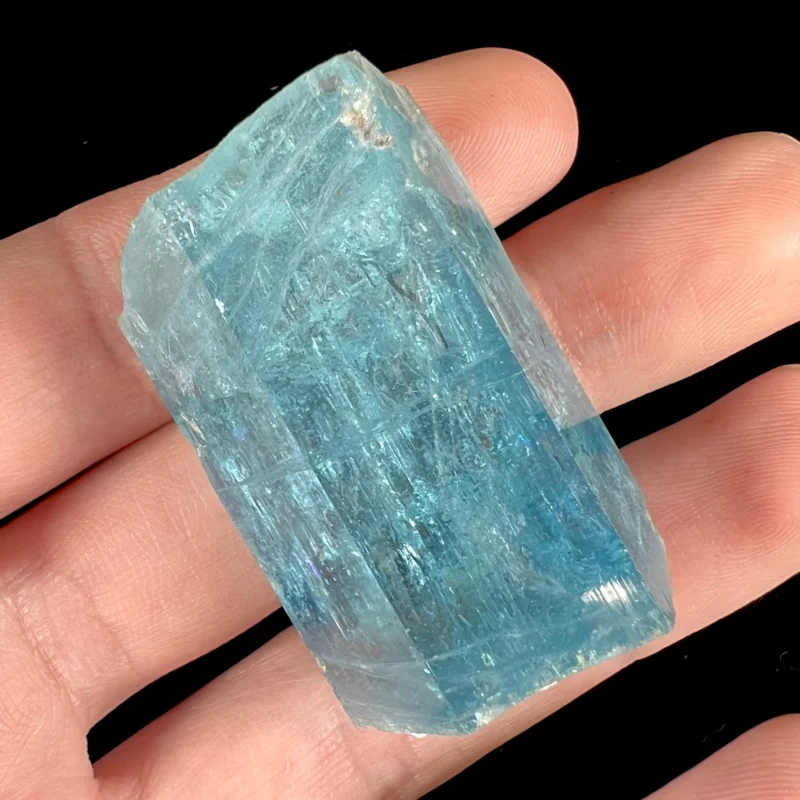
Eastern civilizations, too, hold the aquamarine in high regard. In Vedic astrology, for instance, it is believed that the aquamarine stone can evoke tranquility and clarity, making it a favored gem for meditation practices. Similarly, in ancient Urdu traditions, the aquamarine stone, known as “Beruj,” is laced with myths extolling its virtues in warding off evil spirits and fostering a tranquil mind.
The historical significance of aquamarine is as deep and mesmerizing as its clear blue depths. From ancient legends and royal legacies to spiritual uses across various cultures, the aquamarine birthstone continues to be cherished for its beauty and mystical allure.
Formation and Sources of Aquamarine
Aquamarine stone, renowned for its captivating blue hues, is a member of the beryl mineral family. It forms through complex geological processes that typically occur in granite pegmatites. During its formation, beryllium-rich fluids infiltrate these pegmatite veins under high-pressure and high-temperature conditions. As the fluid cools and crystallizes, it gives birth to the aquamarine stone, which often displays its characteristic sky-blue, sea-green, or even deep, oceanic shades, depending on the presence of trace elements, such as iron and aluminum.
One of the most striking facets of aquamarine’s formation is the clarity and size of the crystals that can develop. The slow cooling of pegmatitic environments enables the formation of large, transparent crystals. This clarity and size are among the reasons aquamarine is so highly prized as a gemstone.
Geographically, aquamarine birthstone, March stone are sourced from several prominent regions around the world. Brazil stands out as one of the most prolific sources, particularly the famed Santa Maria de Itabira, which produces some of the world’s finest aquamarine stones characterized by their deep blue color. Nigeria is another significant contributor, known for providing aquamarines with a unique, light blue coloration. Madagascar is equally noteworthy, with its deposits yielding stones in a variety of blue and green hues.
Aside from these primary locations, aquamarine stone is also found in other notable regions, including Pakistan’s Gilgit-Baltistan province, the Ural Mountains in Russia, and Zambia. Each geographical source contributes unique characteristics to the aquamarine stones they produce, adding to the gem’s allure and desirability in international markets. The blending of natural processes and geographical diversity ensures that every aquamarine stone is not just a mere gemstone, but a marvel of nature’s artistry.
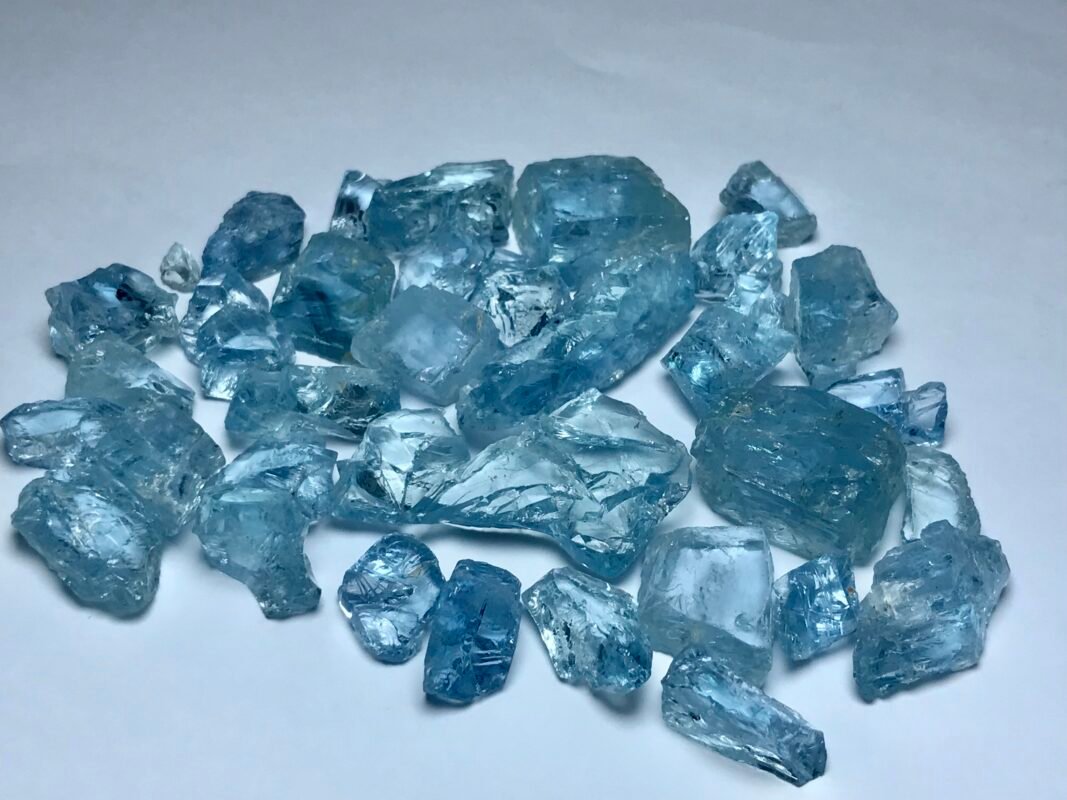
Physical and Chemical Properties
Aquamarine birthstone, known for its captivating blue-green hue, is a gemstone belonging to the beryl family. Its distinct color, reminiscent of the ocean, comes primarily from trace amounts of iron within its crystal structure. Characterized by its transparent to translucent clarity, aquamarine has garnered attention for its aesthetic appeal and compelling physical properties.
Chemically, aquamarine is a beryllium aluminum cyclosilicate with the formula Be3Al2(SiO3)6. This mineral composition contributes to its durability and hardness. On the Mohs scale, March stone aquamarine ranks between 7.5 and 8, making it considerably hard, although not as hard as some other gemstones like diamonds or sapphires. Its resilience enhances its suitability for various jewelry applications, ensuring it withstands the test of time with minimal risk of damage from day-to-day wear.
Aquamarine exhibits a hexagonal crystal system, forming prismatic crystals that can range in size from small specimens to notable, sizable chunks. This crystal habit is a defining characteristic that sets it apart from other gemstones. Additionally, aquamarine’s vitreous luster and glass-like shine contribute to its allure when polished.
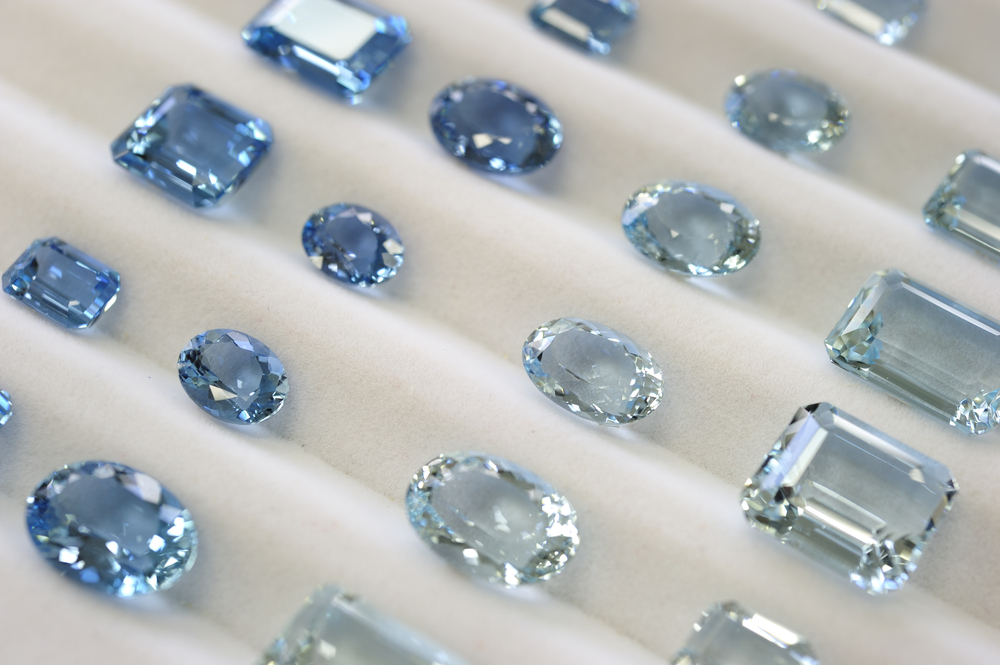
Apart from its striking appearance, aquamarine stone has excellent clarity, often free from inclusions that mar the beauty of other minerals. However, some specimens may contain fine liquid inclusions known as rain-like inclusions, adding to its unique charm. The aquamarine stone in urdu called as Abb-e-Bahr can also exhibit pleochroism, appearing different colors when viewed from different angles; typically, it displays variations in blue-green and pale blue.
Understanding the physical and chemical properties of aquamarine stone in urdu called as Aab-e-Bahr enhances our appreciation of its beauty and functionality as a gemstone. It is these distinctive features that make it not only a desirable piece for jewelry but also a subject of interest in gemological studies worldwide. Whether referred to as the aquamarine birthstone or aquamarine stone in Urdu, this gem continues to enchant admirers across cultures and centuries.
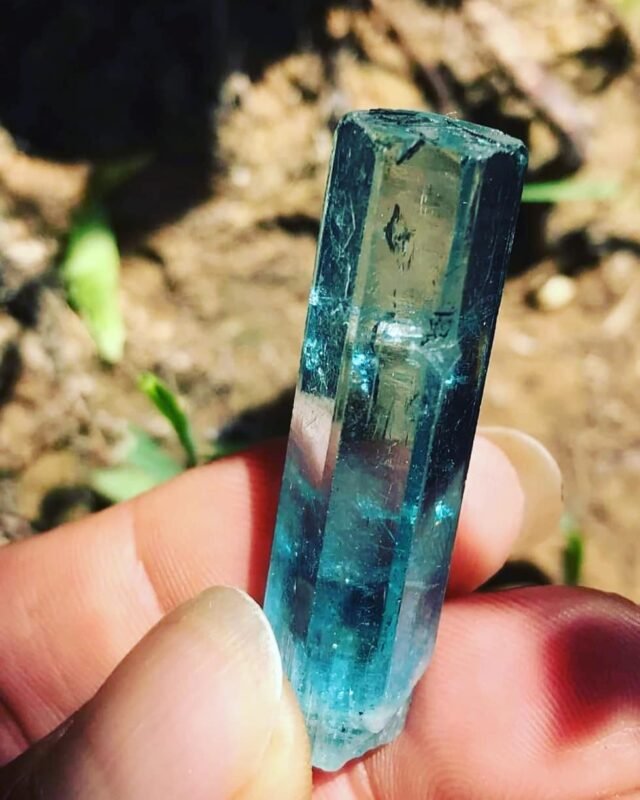
Aquamarine stone, a member of the beryl family, is celebrated for its captivating range of blue hues. The variations in color can be attributed to different geological conditions and trace minerals present during formation. This spectrum ranges from the lightest, almost translucent blue to deep and intense blue-green hues, each with its distinct appeal and market value.
Subtypes and Unique Forms
Within this broad palette, several notable subtypes of aquamarine enhance its allure. Santa Maria aquamarine, originating from the Santa Maria de Itabira mine in Brazil, is particularly revered for its striking deep blue shade. This variety commands high market demand due to its rarity and the depth of its color, making it a prized possession for collectors and jewelry enthusiasts.
Another distinctive form is the ‘Santa Maria Africana’, sourced from Africa, which mirrors the celebrated deep blue of the original Santa Maria gems. Similarly, ‘Espirito Santo’ aquamarine, native to the Espirito Santo state in Brazil, is renowned for its light to medium blue tones, offering versatility in jewelry design.

Color and Clarity
The color and clarity of aquamarine stones significantly affect their aesthetic value. The most valuable specimens possess a pure, intense blue with exceptional clarity and minimal inclusions. However, greenish-blue variants are also admired for their unique charm and are often cut in larger sizes to maximize their visual impact. Heat treatment is a common practice to enhance the blue color, making these aquamarine stones more appealing to the market.
Market demand for aquamarine birthstone varies based on these color and clarity factors. Light blue aquamarines are popular for their soothing and serene appearance, suitable for everyday wear. In contrast, the deeper blue and blue-green stones, especially those like the Santa Maria aquamarine, are favored for special occasions and high-end jewelry pieces.
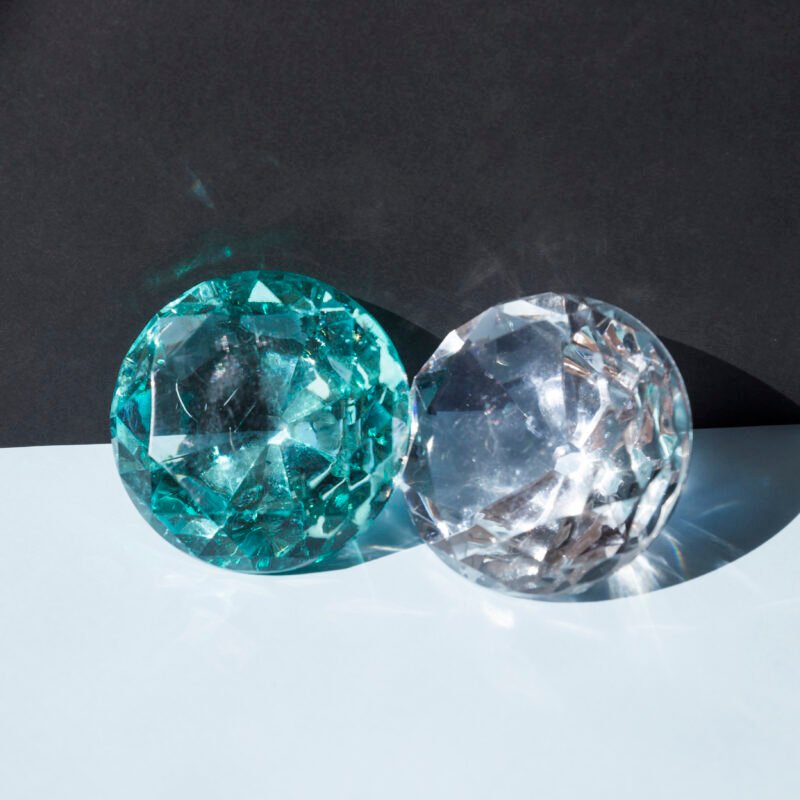
In essence, the diverse types and varieties of aquamarine stones, ranging from pale blue to deep blue-green, not only cater to different aesthetic preferences but also influence their market value and desirability. Each subtype, with its unique characteristics, adds to the rich tapestry of this mesmerizing gemstone.
Aquamarine in Jewelry and Fashion
Aquamarine birthstone, with its serene blue hue, has cemented its place not only as a coveted gemstone but also as a versatile component in the world of jewelry and fashion. This exquisite gemstone’s alluring appearance makes it a popular choice for various kinds of adornments, including rings, necklaces, earrings, and bracelets. Jewels embedded with aquamarine stones are known for their elegance and sophistication, often appealing to those seeking both allure and subtlety.
One of the prominent uses of aquamarine in jewelry is in engagement rings. Its light blue color signifies tranquility, making it a unique and refreshing alternative to traditional diamonds. Furthermore, aquamarine’s durability ensures that pieces such as rings can withstand daily wear without losing their luster. Beyond engagement rings, aquamarine finds favor in everyday wear and statement pieces, boasting versatility as it complements both casual and formal attire.
Necklaces adorned with aquamarine stones exude elegance, especially when paired with white gold or platinum settings that accentuate the gemstone’s natural brilliance. Similarly, aquamarine earrings, varying from studs to danglers, add a touch of class, making them ideal for both everyday use and special occasions. Additionally, bracelets featuring aquamarine stones imbue a hint of luxury, effortlessly enhancing any ensemble.

An array of famous aquamarine pieces has garnered significant attention in fashion circles. For instance, the Brazilian Aquamarine Parure, gifted to Queen Elizabeth II, showcases the stone’s regal capability through tiaras, earrings, and necklaces. Such pieces emphasize the timeless appeal of aquamarine and its place in high-end fashion. Contemporary trends also see designers incorporating aquamarine into innovative designs, blending modern artistry with the stone’s classic charm.
As fashion continues to evolve, aquamarine remains a beloved choice for designers and wearers alike, thanks to its versatile color and captivating presence. Whether for its aesthetic appeal or symbolic significance, aquamarine stands out as a gemstone that continues to influence jewelry trends globally.
Market Value and Pricing Factors
The market value of the aquamarine stone is determined by several factors, each contributing to its overall appeal and pricing dynamics. Chief among these are color, clarity, cut, and carat weight. High-quality aquamarine birthstone exhibit a rich, oceanic blue hue, which significantly elevates their market value. Aquamarines with lighter tones tend to be more common and, thus, less expensive, while those possessing a deep blue shade are rarer and usually command a higher price.
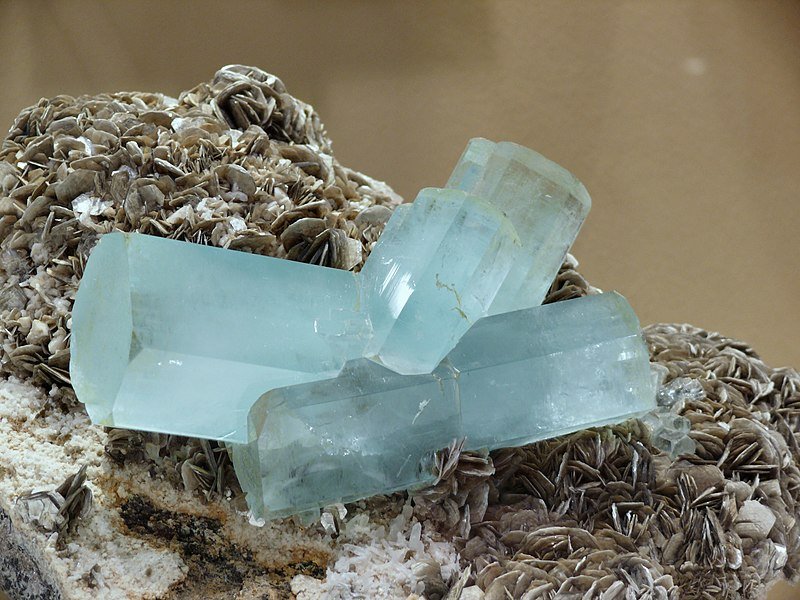
Clarity is another essential element influencing the value of aquamarine stones. Stones with fewer inclusions and higher transparency are typically more desirable. Unlike many other gemstones, aquamarines are generally free from significant inclusions, with eye-clean clarity being the standard. This intrinsic quality means that clarity does not usually detract from the stone’s value, though completely flawless specimens still fetch a premium.
The cut of the aquamarine stone is also critical in determining its market price. While traditional shapes like emerald or oval cuts are popular, the precision of the cut directly affects the stone’s brilliance and overall aesthetic appeal. Well-proportioned cuts can maximize the stone’s color and clarity, enhancing its marketability and value. Conversely, poorly executed cuts can diminish the stone’s natural beauty and lower its price.
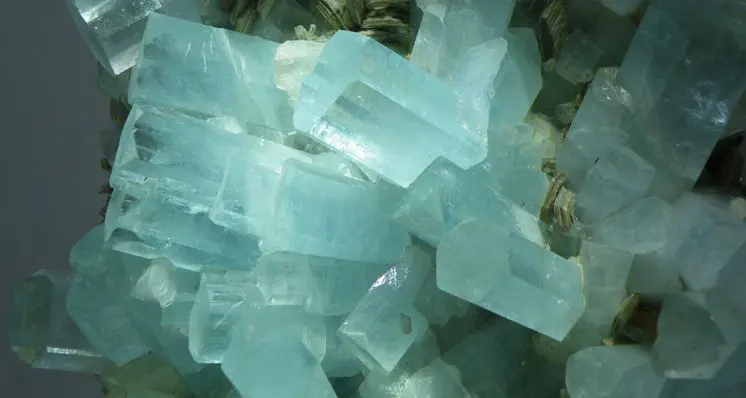
Carat weight, a measure of the stone’s size, additionally impacts the pricing of aquamarine stone. Larger stones are rarer and, consequently, more expensive per carat than smaller ones. That said, the stone’s overall quality remains paramount; a smaller, higher-quality aquamarine can often be more valuable than a larger, lower-quality counterpart.
Current market trends and demand also play a significant role in the pricing of aquamarine march stone. Factors such as consumer preferences, fashion trends, and the global economic climate can either boost or suppress market values. To make an informed purchase, prospective buyers should consider these elements along with comprehensive gemstone certifications that attest to quality and authenticity.

Understanding the proper care for aquamarine birthstone jewelry is essential to maintain its brilliance and longevity. Aquamarine, renowned for its stunning blue hue, requires specific attention to keep it looking its best. Regular cleaning is vital but should be approached with caution. Employ a mild soapy solution using lukewarm water and a soft brush to gently scrub the aquamarine. Avoid using harsh chemicals or ultrasonic cleaners, which can damage the stone or its setting.
Storing aquamarine stone jewelry correctly is equally important. When not in use, keep the jewelry in a soft, padded jewelry box or a fabric-lined storage compartment. This measure helps prevent scratches and other physical damage. It’s advisable to store each piece separately, especially from harder gemstones such as diamonds, which can cause abrasions to the aquamarine’s surface.
Precautions should also be taken when wearing aquamarine birthstone. Although aquamarine rates an 8 on the Mohs hardness scale, making it relatively durable, it’s not invincible. Avoid exposing the aquamarine stone to high heat or abrupt temperature changes, as these conditions can cause the gemstone to crack. Additionally, when engaging in activities that involve heavy manual work or exposure to abrasive surfaces, it’s best to remove the aquamarine jewelry to prevent accidental chipping or breaking.
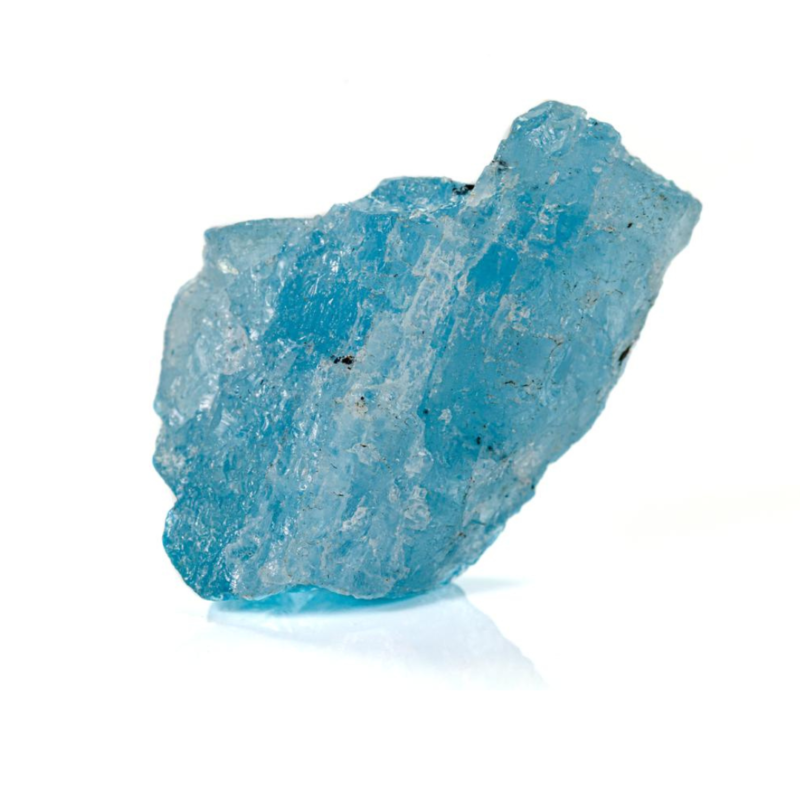
An often-overlooked aspect of maintaining aquamarine’s allure involves routine professional check-ups. Have a jeweler inspect the aquamarine birthstone jewelry periodically to ensure the setting remains secure and the gemstone is in pristine condition. This proactive approach can help identify and address minor issues before they escalate into significant problems.
In conclusion, with thoughtful care, aquamarine jewelry can retain its enchanting beauty for years. By following these cleaning techniques, storage recommendations, and wearing precautions, one can preserve the majestic appeal of the aquamarine stone, enabling it to shine brilliantly and elegantly across generations.
